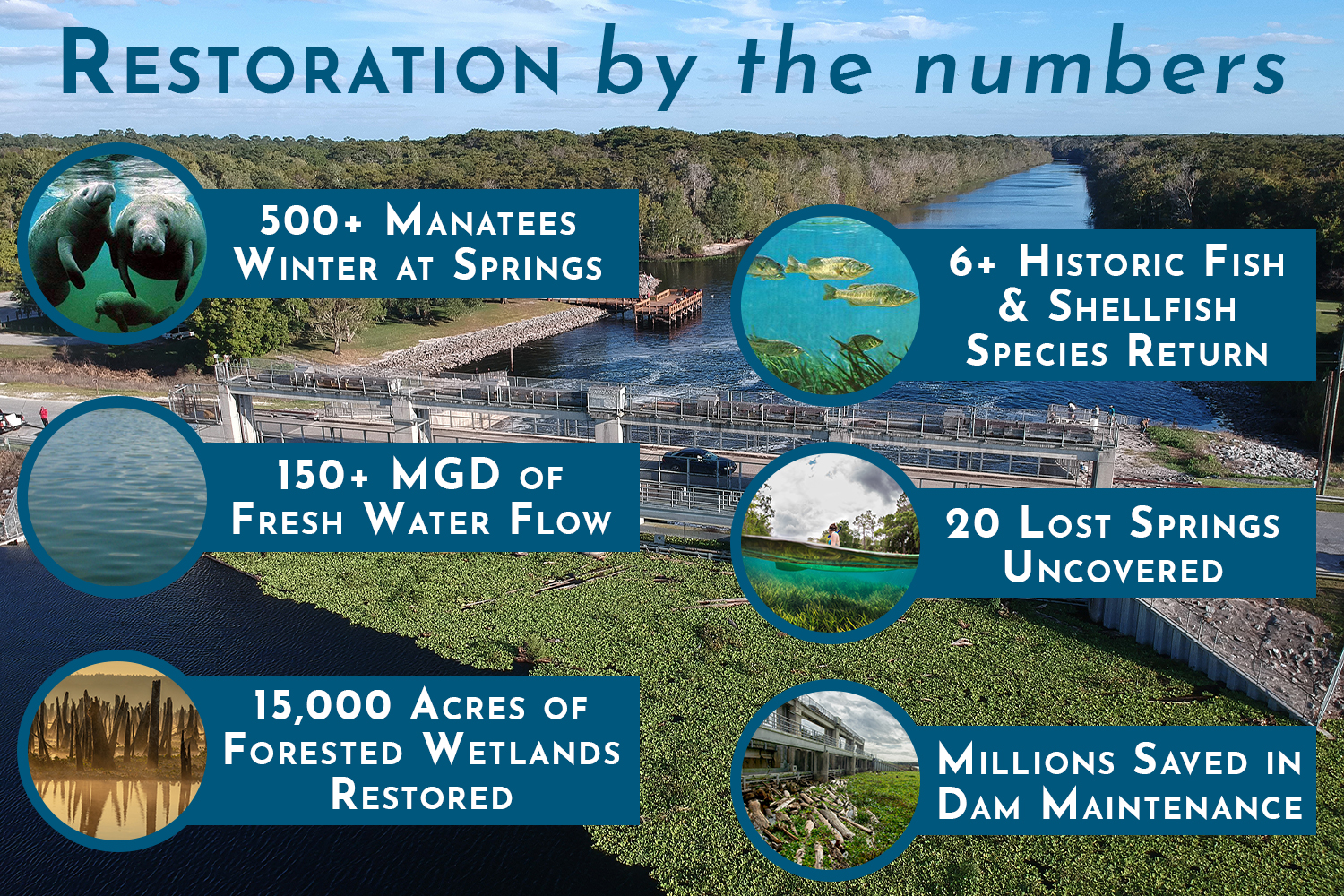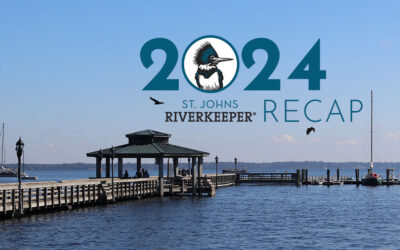Reunite the Rivers
Reunite the Rivers – For Us All!
We are proud to be a founding member of the Reunite the Rivers Coalition which includes 60 organizations representing thousands of members from across Florida and beyond. Our collective mission is to restore a free-flowing Ocklawaha River, reconnecting the Silver and St. Johns Rivers, and elevating the regional benefits for all!
It's About Dam Time to Reunite the Rivers
Sign the pledge to support and advocate for the restoration of the Ocklawaha River during the 2026 Florida Legislative Session. State decision makers need our support now more than ever to make Ocklawaha River restoration a reality in 2026. Your voice will make a difference.
Working together we can ensure that the Ocklawaha River is restored, and new recreational amenities and economic opportunities are created benefitting Silver Springs, the St. Johns River, fish, wildlife, manatees, and the people of Florida.
Reunite the St. Johns River, Ocklawaha River and Silver Springs
For over 50 years, an obsolete dam built as part of the failed Cross Florida Barge Canal has been damaging the health of historic Silver Springs, the Ocklawaha River, and the St. Johns.
The Rodman Dam (now known as the Kirkpatrick Dam) resulted in the clearing and flooding of approximately 7,500 acres of floodplain forests, while submerging over 20 springs and 16 miles of the Ocklawaha beneath a massive pool of water.
The federal government eventually halted the boondoggle canal project, but the obsolete dam across the Ocklawaha and the impounded pool of water remain after all these years.
The time has come to finally free the Ocklawaha River and reconnect the Ocklawaha, Silver and St. Johns Rivers!
Breaching the dam will reestablish access to essential habitat for manatees, bring back migratory fish populations, reconnect three river ecosystems and historic Silver Springs, and restore a lost riverway for anglers and paddlers from the Ocklawaha to the Atlantic. We have a historic opportunity to restore this Great Florida Riverway once and for all!


Latest News
2024 St. Johns Riverkeeper Recap
As we enter our 25th anniversary year, we are...
National Estuaries Week and the St. Johns
In observance of the upcoming National Estuaries...
Advocacy Update: Summer 2023
St. Johns RIVERKEEPER’s mission is to defend the...
Benefits of Freeing the Ocklawaha

Restore Forested Wetlands
- 8,000 acres of forested wetlands are currently stressed in the lower Ocklawaha River below the dam due to restricted flow.
- 7,500 acres of forested wetlands are currently submerged in the Rodman Pool.
- These restored wetlands would expand essential habitat, serve as water quality filters, and provide natural flood protection.
Improve Water Quality
- Restoring the natural flow of the Ocklawaha and over 15,000 acres of forested wetlands will greatly enhance bio-filtration and improve the ecological function of the St. Johns River Ecosystem.
- A free-flowing Ocklawaha River would reduce the need for herbicide spraying of invasive aquatic plants to prevent frequent blockages of the river and boat ramps.
Restore Freshwater Flow to the St. Johns
- Restoring the natural flow of the Ocklawaha would provide at least 150 million gallons of additional freshwater to the St. Johns River each day. This would occur primarily by restoring natural flow of the 20 springs submerged below the massive pool of water behind the dam and by reducing the amount of evaporation that occurs.
- The additional freshwater will help offset saltwater intrusion from dredging and sea level rise that continues to move further upstream, while helping to reduce the frequency of algal blooms and improve growing conditions for submerged grasses.
- Restoration will reduce the impacts to the Lower Ocklawaha and St. Johns Rivers from periodic drawdowns that occur every three to four years. Drawdowns negatively impact the lower Ocklawaha and St. Johns Rivers by 1) repeated discharge of slugs of nitrogen and phosphorus downstream and 2) altering the estuary salinity balance.
- Restoration will help maintain the balance of salt and freshwater in the Lower St. Johns River Estuary, ensuring healthy fisheries and thriving sport fishing, commercial fishing and shellfish industries.
Restore Habitat for Manatees and Fisheries
- Manatees, black bear, and other wildlife would benefit from additional habitat and restored waterways. Manatees retreat to the warmer waters of the springs during the winter months and would have access to Silver Springs and twenty springs currently submerged under the massive pool of water behind the dam.
- Restoration would restore natural migration patterns by allowing eel and migratory fish, like shad, striped bass, channel catfish and mullet, to access the upper parts of the river and Silver Springs.
- An increase in freshwater flow will improve growing conditions for submerged aquatic vegetation in the St. Johns River, which is essential for fish and wildlife.
- Restoring the natural water flow would reduce the frequency of toxic blue-green algal blooms that can result in fish kills and the loss of submerged grasses.
Expand Recreation Opportunities
- Restoration would expand public access and recreation opportunities, including kayaking, nature photography, and wildlife watching.
- A free-flowing Ocklawaha would benefit Silver Springs (the largest spring in the St. Johns River Watershed and a major recreational destination) by improving water quality and allowing native fish and manatee to return.
- University of Florida study estimated regional visitations would increase by 28% due to the expanded and more diverse recreational opportunities that would be available.
Experience the Great Florida Riverway
Restore 3 Rivers and 50 Springs with 1 Solution
The history, science, passion, and economics converge into a one-hour online special featuring 24 voices along the Great Florida Riverway — Silver Springs, the Ocklawaha, and St. Johns. From stunning videography to unforgettable memories to leading-edge science, those that care about this Great Florida Riverway came together for the rivers. Watch the full documentary.
The Real Ocklawaha: What Does Restoration Look Like?
Restoring the Ocklawaha River and the adjacent floodplain forest currently submerged beneath the Rodman Pool is a relatively straightforward process that can be successfully completed at a cost significantly less than most restoration projects. The recommended restoration option would involve breaching 2,000 feet of the dam to restore the natural channel of the Ocklawaha, while retaining the popular park and recreation facilities. St. Johns RIVERKEEPER and the Reunite the Rivers Coalition also support the creation of additional access and recreational resources that would be possible with a restored river.









